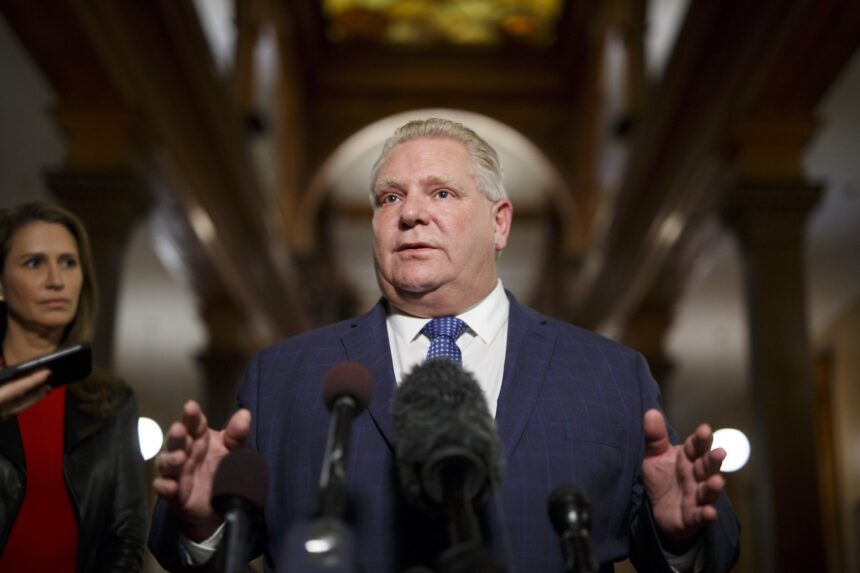The Ontario government has opened its controversial Bill 5 for public consultation, marking a critical juncture in Premier Doug Ford’s ambitious plan to establish Special Economic Zones across the province. The legislation, formally titled the “Accelerating Ontario’s Economic Growth Act,” proposes to create designated areas where businesses would operate under significantly reduced regulations and tax burdens—a move the government claims will supercharge economic development but critics fear could undermine environmental protections and labor standards.
“This is about making Ontario competitive on the global stage,” said Premier Ford at yesterday’s announcement in Brampton. “Our Special Economic Zones will cut red tape, accelerate permits, and create thousands of good-paying jobs for hard-working Ontarians while maintaining essential protections.”
The public consultation process, beginning next week and running through December 15, represents the first opportunity for citizens to formally weigh in on what many policy experts consider the most significant economic restructuring proposal in the province’s recent history. The government has launched an online portal where Ontarians can submit feedback on the draft legislation.
Economic Development Minister Victor Fedeli outlined the core of the proposal: designated zones would offer streamlined approvals for construction permits, reduced property taxes, and special immigration pathways for skilled workers. “We’re building economic engines that will power Ontario’s growth for generations,” Fedeli stated during the press briefing.
However, environmental advocacy groups and labor unions have raised significant concerns about the legislation. The Ontario Environmental Coalition has criticized what they describe as “alarming exemptions” from environmental assessment requirements within the proposed zones. “This bill potentially sacrifices decades of environmental progress for short-term economic gains,” said Maria Sanchez, the coalition’s executive director.
The Ontario Federation of Labour has similarly expressed apprehension that the zones could become “regulatory havens” where worker protections are diminished. “We’re deeply concerned that this creates a two-tier regulatory system that puts workers’ rights at risk,” noted OFL President Patricia Coates.
Financial analysts from major Canadian institutions offer mixed assessments. TD Bank’s economic research unit projects the zones could add 0.8% to Ontario’s GDP growth over five years if implemented according to current proposals. However, CIBC’s chief economist warns that “regulatory competition between provinces could trigger a race to the bottom that ultimately diminishes Canada’s overall economic framework.”
The legislation draws inspiration from similar models in Asia and Europe but represents the most ambitious attempt to implement such a system in North America. The government has identified potential zone locations in Eastern Ontario, the Golden Horseshoe, and Northern Ontario, targeting sectors including advanced manufacturing, life sciences, and technology.
Municipal leaders are divided, with some welcoming the economic potential while others worry about diminished local authority over development decisions. Toronto Mayor Olivia Chow has expressed concerns about “provincial overreach” while Hamilton Mayor Andrea Horwath cautiously welcomed the potential for brownfield redevelopment.
As the public consultation period opens, the key question remains: can Ontario strike the delicate balance between accelerating economic growth and preserving the regulatory frameworks that protect our environment, workers, and communities? The answer may well determine the province’s economic and social trajectory for decades to come.










